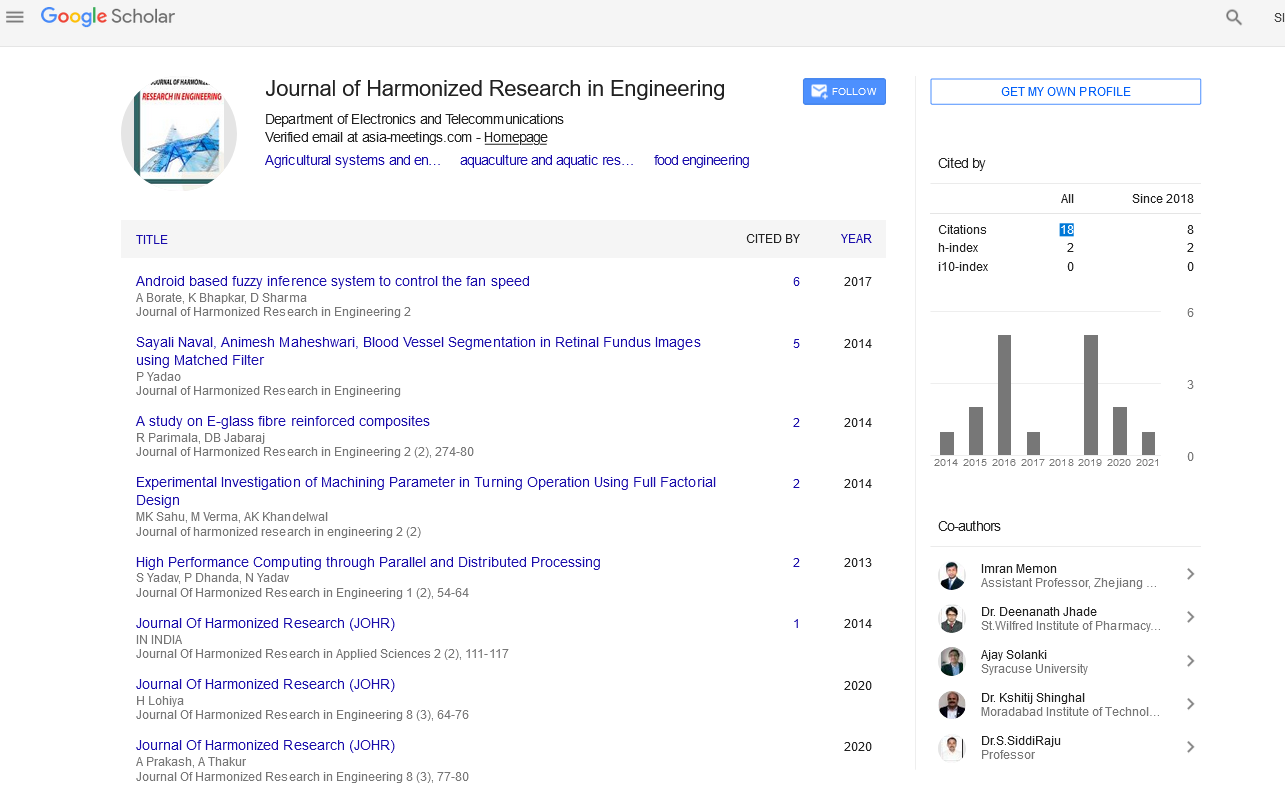Commentary - (2022) Volume 10, Issue 2
DEMONSTRATING INTELLIGENCES BY MACHINE WHICH ASSOCIATE TRAITS OF HUMAN BRAIN
Ben Morris*Received: Jun 02, 2022, Manuscript No. JHRE-22-66635; Editor assigned: Jun 07, 2022, Pre QC No. JHRE-22-66635(PQ); Reviewed: Jun 28, 2022, QC No. JHRE-22-66635; Revised: Jul 05, 2022, Manuscript No. JHRE-22-66635(R); Published: Jul 15, 2022, DOI: 10.30876/2347-7393.22.10.201
Description
Artificial Intelligence (AI) is a broad field of computer science that focuses on creating intelligent machines that can accomplish activities that would normally need human intelligence. The simulation of human intelligence processes by machines, particularly computer systems, is known as artificial intelligence. Expert systems, natural language processing, speech recognition, and machine vision are examples of AI applications.
Working of AI
For designing and training machine learning algorithms, AI requires a foundation of specialized hardware and software. Although no single computer language is synonymous with AI, a handful stand out, including Python, R, and Java.
Processes of learning: This element of AI programming is concerned with gathering data and formulating rules for turning it into useful information. Algorithms are rules that give computing equipment with step-by-step instructions for completing a certain task.
Processes of reasoning: This element of AI programming is concerned with selecting the best algorithm to achieve a given result.
Processes of self-correction: This element of AI programming aims to fine-tune algorithms on a regular basis to guarantee that they produce the most accurate results feasible.
Significance of artificial intelligence
AI is significant because it provides businesses with previously unavailable insights into their operations and in some situations; AI can execute tasks better than humans. AI systems generally accomplish operations quickly and with minimal errors, especially when it comes to repetitive, detail-oriented activities like evaluating vast quantities of legal papers to verify key fields are filled in correctly.
Examples of artificial intelligence technology
Artificial intelligence (AI) is used in a wide range of technologies. The following are three examples:
Machine learning: This is the science of getting a computer to do something without having to programme it. Deep learning is a subtype of machine learning that may be thought of as the automation of predictive analytics in simple terms.
Machine vision: With this technology, a machine is able to see. Machine vision uses a camera, analogue to digital conversion, and digital signal processing to gather and analyses visual data. Machine vision is frequently likened to human vision; however it is not limited by biology and may be programmed to see past walls; for example, from signature recognition to medical picture analysis, it’s employed in a variety of applications. Machine vision is frequently confused with computer vision, which focuses on machine-based image processing.
Self-driving vehicles: To create automatic expertise at navigating a vehicle while keeping in a given lane and avoiding unforeseen objects like pedestrians, autonomous cars employ a combination of computer vision, image recognition, and deep learning.
AI applications
Artificial intelligence has penetrated a wide range of industries. The following are examples.
AI in health care: The most significant wagers are on improving patient outcomes and lowering costs. Machine learning is being used by businesses to make better and faster diagnoses than people. IBM Watson is one of the most well-known healthcare technologies. It can understand and react to questions in normal language. To build a hypothesis, the system mines patient data and other available data sources, which it then provides with a confidence grading schema. Other AI uses include deploying online virtual health assistants and chabot’s to aid patients and healthcare customers in locating medical information, scheduling appointments, comprehending the billing process, and completing other administrative tasks.
The use of artificial intelligence in education: AI can help schools save time by automating grading. It has the ability to analyses students and adjusts to their needs, allowing them to work at their own pace. Students can benefit from additional guidance from AI tutors, ensuring that they stay on track. And technology has the potential to alter where and how children study, possibly even displacing some professors.
Banking with artificial intelligence: Chabot’s are being successfully used by banks to inform clients about services and opportunities, as well as to perform transactions that do not require human participation. Artificial intelligence virtual assistants are being utilized to improve and reduce the costs of banking regulatory compliance. AI is also being used by banking institutions to improve loan decision-making, set credit limits, and identify investment opportunities.
Transport and artificial intelligence: A I is utilized in transportation to control traffic, predict airline delays, and make ocean shipping safer and more efficient, in addition to its vital role in operating autonomous cars.
Conclusion
AI and machine intelligence are at the top of the list of buzzwords used by security providers to differentiate their products today. Those phrases also denote technologies that are actually viable. To detect abnormalities and suspicious actions that suggests dangers, organizations utilize machine learning in Security Information and Event Management (SIEM) software and related domains. AI can deliver alerts to new and developing attacks far faster than human employees and prior technology iterations by evaluating data and utilizing logic to find similarities to known harmful code. The advancement of technology is assisting corporations in their fight against cyber-attacks.

Google Scholar citation report
Citations : 43
Journal of Harmonized Research in Engineering received 43 citations as per google scholar report









